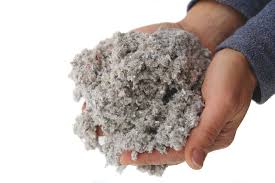Cell Wall
Cell membranes surround every type of plant, both animal and plant cells. More specifically plant cells have and extra barrier of protection that surrounds the cell membrane called the Cell wall, these walls are made of cellulose that are only found around plant cells and a few other organisms. Cellulose is a specialized sugar that is classified as a structural carbohydrate and not used for energy.

 If a plant cell is like a water balloon, the cell wall is like a cardboard box that protects the balloon. The balloon is protected from any harmful materials and provides support allowing the cell to function properly.
If a plant cell is like a water balloon, the cell wall is like a cardboard box that protects the balloon. The balloon is protected from any harmful materials and provides support allowing the cell to function properly.

 If a plant cell is like a water balloon, the cell wall is like a cardboard box that protects the balloon. The balloon is protected from any harmful materials and provides support allowing the cell to function properly.
If a plant cell is like a water balloon, the cell wall is like a cardboard box that protects the balloon. The balloon is protected from any harmful materials and provides support allowing the cell to function properly.
"The Importance of Cell Walls"
Cell Wall Functions:
- Provide support and limited plasticity
- Prevent loss of water
- Protection from insects and pathogens
- Filter
- Prevent over expansion caused by too much water
Plant cell wall consists of three layers: the primary cell wall, secondary cell wall and the middle lamella.
The middle lamella - It is first layer formed during cell division. This layer is rich in pectin. It is the outermost layer, joins together adjacent plant cells and holds them together.
The primary cell wall -It is formed after the middle lamella. It is composed of pectin compounds, hemicellulose and glycoproteins. The layer consists of a framework of cellulose micro-fibrils, in a gel-like matrix. It is thin, flexible and extensible layer.
The secondary cell wall - It is a thick layer formed inside the primary cell wall. It is extremely rigid and provides strength. It is composed of cellulose,hemicellulose and lignin.

 A cell wall is not an impenetrable fortress around the delicate plant cell. There are small holes, called plasmodesmata, in the cell walls between plant cells. The cell membranes of neighboring cells are able to connect through these holes. The connections allow the transfer of nutrients, waste, and ions. Molecules can also pass through the spaces within the cell walls, avoiding the cells completely.
A cell wall is not an impenetrable fortress around the delicate plant cell. There are small holes, called plasmodesmata, in the cell walls between plant cells. The cell membranes of neighboring cells are able to connect through these holes. The connections allow the transfer of nutrients, waste, and ions. Molecules can also pass through the spaces within the cell walls, avoiding the cells completely.
No comments:
Post a Comment
Note: only a member of this blog may post a comment.